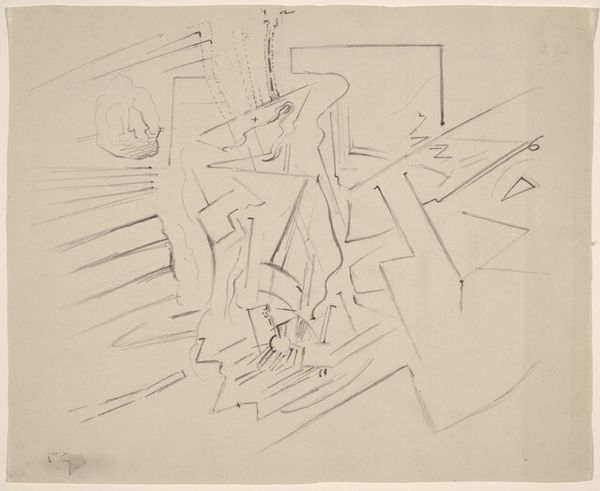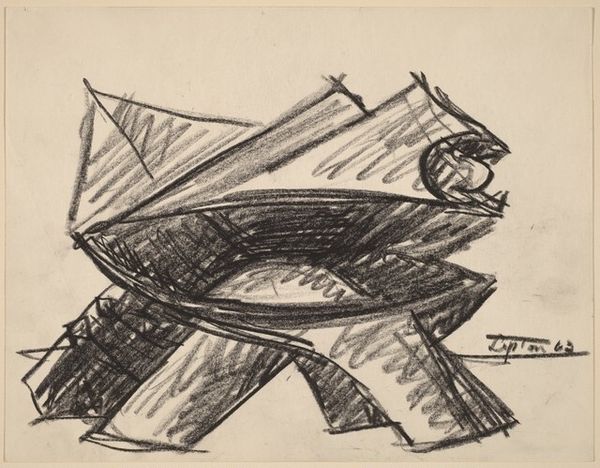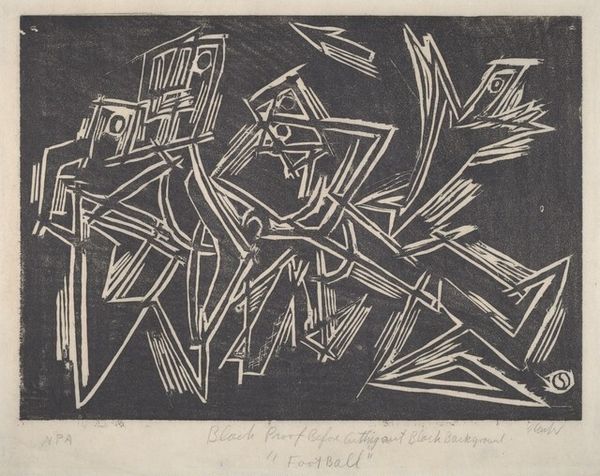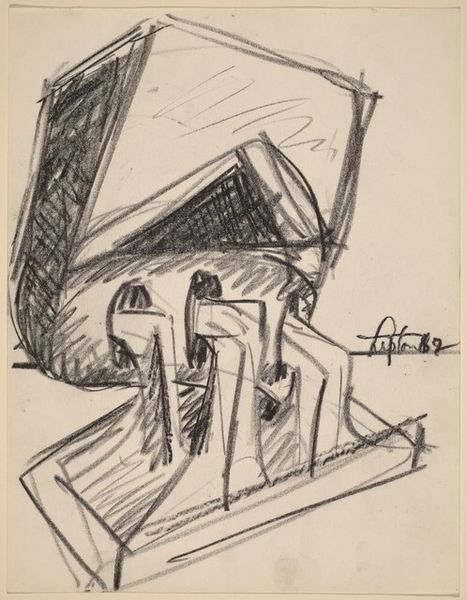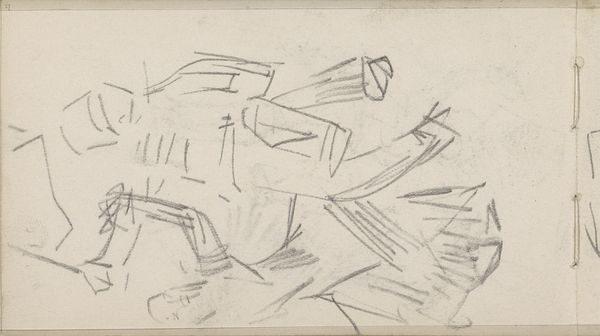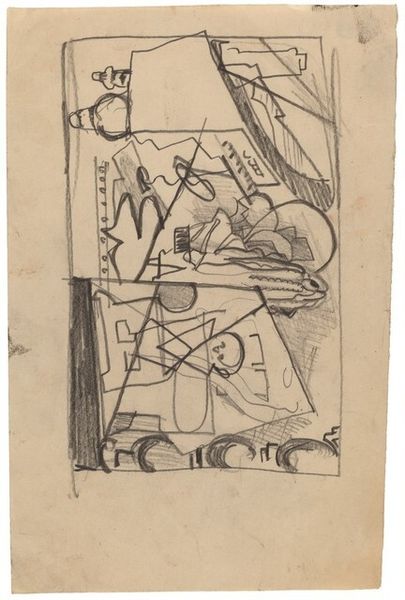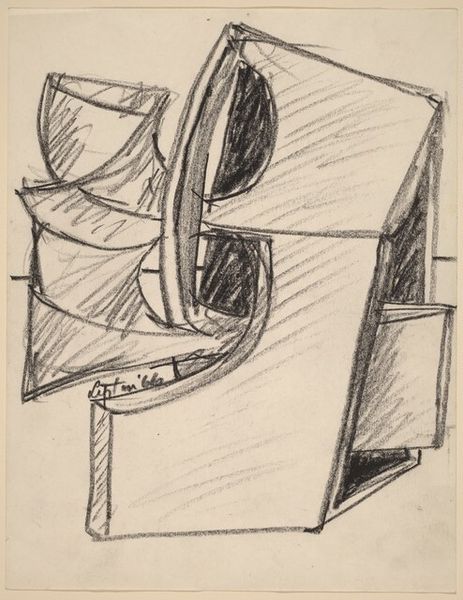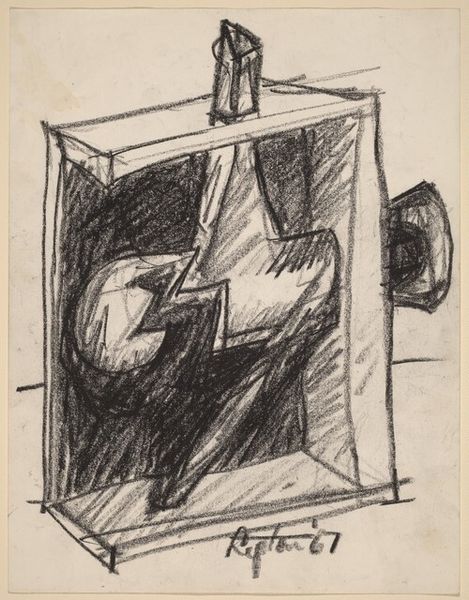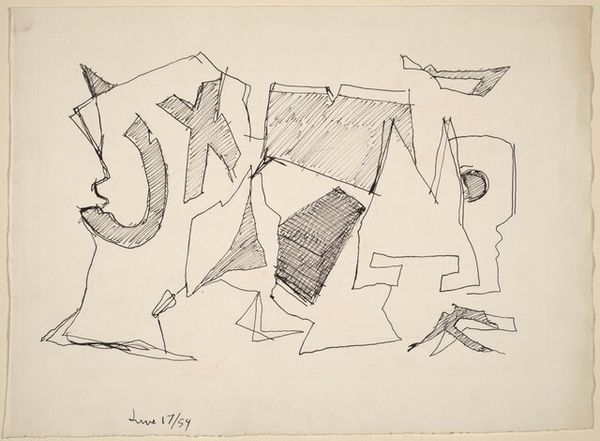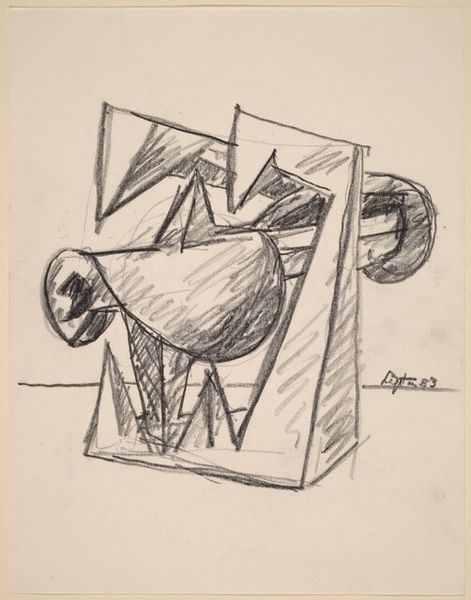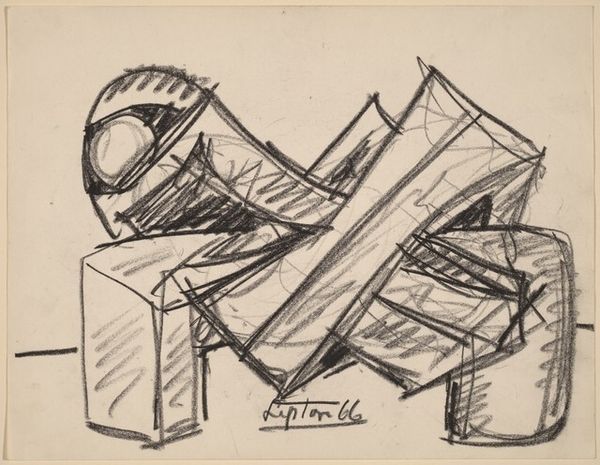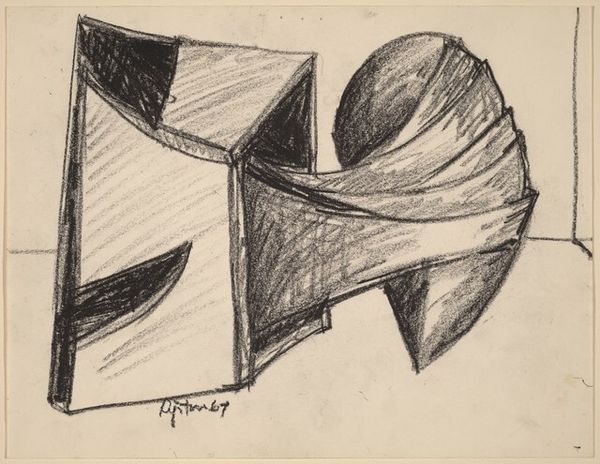
drawing, graphite
#
abstract-expressionism
#
drawing
#
form
#
geometric-abstraction
#
line
#
graphite
Dimensions: sheet: 21.43 × 27.94 cm (8 7/16 × 11 in.)
Copyright: National Gallery of Art: CC0 1.0
Editor: This is "Study for 'Seafarer'," a 1959 graphite drawing by Seymour Lipton. It feels very angular and abstract, like a puzzle I can't quite piece together. What do you see in this piece? Curator: A battle of forms, wouldn't you say? Lipton wrestled not just with lines and graphite, but with a kind of internal ocean. Look at the sharp angles bumping up against those tentative curves! It’s as if he’s caught the essence of a ship—or perhaps, more profoundly, the feeling *of* being a seafarer—not the physical thing, but the journey, the loneliness, the constant shifting. Does it conjure a similar mood for you? Editor: I see that, definitely! I initially focused on the shapes as being separate, but the idea of motion and the emotion of that journey really ties them together. Was Lipton always this abstract? Curator: Lipton was all about transformation. He started with more figurative work, but, like many artists after the war, he wanted to capture something beyond the surface, something about the anxieties and energies of the atomic age. He once said he wanted his sculptures—and this drawing feels like a sculpture in waiting—to have a "presence." I think he succeeded, don't you? There's a quiet but forceful tension radiating from those graphite marks. It almost has a personality! Editor: I totally get that! Now it seems less like a jumble of lines and more like… a spirit in progress. Curator: Exactly! And that's the beauty of a "study," isn’t it? We get to peek behind the curtain and see the artist grappling with an idea before it sets sail into a final form. Editor: So cool. I am definitely viewing the drawing from a fresh perspective now, that's for sure.
Comments
No comments
Be the first to comment and join the conversation on the ultimate creative platform.
